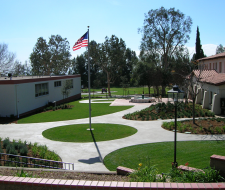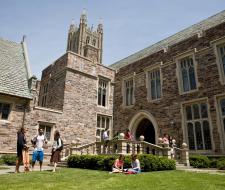Football in USA 2026
-
 Students are accepted to top-100 universities
Students are accepted to top-100 universities USALos Angeles, CaliforniaCurrently watching: 7from 75800.00 $ / year
USALos Angeles, CaliforniaCurrently watching: 7from 75800.00 $ / year -
 By far the best school in Texas, outstanding facilities and accommodation
By far the best school in Texas, outstanding facilities and accommodation USAHouston, TexasCurrently watching: 6from 25225.00 $ / year
USAHouston, TexasCurrently watching: 6from 25225.00 $ / year -
 94% of graduates successfully enroll universities, including Ivy League universities
94% of graduates successfully enroll universities, including Ivy League universities USAMiami, FloridaCurrently watching: 8from 28680.00 $ / year
USAMiami, FloridaCurrently watching: 8from 28680.00 $ / year -
 100 % University placement from each graduating class
100 % University placement from each graduating class USANew YorkCurrently watching: 8from 69500.00 $ / year
USANew YorkCurrently watching: 8from 69500.00 $ / year -
 an average SAT score made up 1350 in 2019
an average SAT score made up 1350 in 2019 USALos Angeles, CaliforniaCurrently watching: 7from 2950.00 $ / 2 weeks
USALos Angeles, CaliforniaCurrently watching: 7from 2950.00 $ / 2 weeks -
 Leading boarding school right in the heart of Manhattan
Leading boarding school right in the heart of Manhattan USANew YorkCurrently watching: 6from 2250.00 $ / 2 weeks
USANew YorkCurrently watching: 6from 2250.00 $ / 2 weeks -
 Ranked #18 in QS World University Rankings 2023.
Ranked #18 in QS World University Rankings 2023. USAYale, New Haven, ConnecticutCurrently watching: 7from 8625.00 $ / 3 weeks
USAYale, New Haven, ConnecticutCurrently watching: 7from 8625.00 $ / 3 weeks -
 #1 out of 443 National Universities
#1 out of 443 National Universities USANew YorkCurrently watching: 6from 8625.00 $ / 3 weeks
USANew YorkCurrently watching: 6from 8625.00 $ / 3 weeks -
 from 65925.00 $ / year
from 65925.00 $ / year -

 USALos Angeles, CaliforniaCurrently watching: 6from 4794 $ / 2 weeks
USALos Angeles, CaliforniaCurrently watching: 6from 4794 $ / 2 weeks
Football in the United States is going through a period of dynamic growth and increasing popularity. American sports have traditionally been dominated by football, basketball and baseball, but in recent decades, European football (soccer, as it is called in the United States) has begun to gain popularity, including through the expansion of the Major League Soccer (MLS) and international tournaments (the same World Cup). This is evident in the increase in the number of youth leagues, camps and academies dedicated to football.
Expanding infrastructure, growing interest in sports and increased investment create excellent conditions for young players. In the future, football in the United States is likely to continue to develop, offering even more opportunities for children. Investments in youth programs and growing interest from the media and international tournaments will further increase the popularity of sports – for children who are passionate about football, this means new opportunities for personal development and career growth.
Alternative destinations
Features of sports football camps for children in the USA
The growing interest in football has led to the emergence of numerous programs for children. Today, teenagers across the country have access to a variety of soccer programs that help develop their skills and passion for the game: these include both local amateur leagues and more serious competitive teams.
Football camps for children in the United States play a key role in the development of young players, offering structured training where children can improve their technical skills, understanding of the game and physical fitness. Many camps are run by experienced coaches, including former professional players and national team coaches, which ensures high quality training. Football academies in the United States are diverse, offering unique opportunities to develop the individual talents and skills of young players.
What details do you need to consider when choosing a football camp in the USA?
Types of camps
- Elite: They are run by professional clubs, offer high-quality training and opportunities for professional growth.
- Specialized: Focus on specific aspects of the game, such as goalkeeping, shooting, or technical skills.
Integration with professional and student programs
- College Camps: They allow high school players to demonstrate their skills in front of college coaches and scouts.
- Professional Club Camps: They offer training from well-known clubs, which can open up opportunities for youth teams.
Additional aspects
- Skills assessment: Many camps offer assessment and feedback on progress.
- Tournaments and demonstrations: Many camps include in-house tournaments to test your level of fitness.
- Cultural events: Sports academies usually offer cultural and recreational activities for children to relax outside of training (in the evenings and on weekends).
Seasonal and regional differences
- Summer camps: The most popular, take the longest school holidays.
- Winter and Spring Camps: They are available in the off-season.
- Regional differences: The approach to learning may vary depending on the region (city, state).
Advantages of US Soccer Academies
- Teen soccer camps in the United States offer quality training under the supervision of experienced coaches, including former professional players and certified professionals. Many camps collaborate with local clubs and professional teams.
- The curriculum includes technical training, tactical training and game sessions. The focus is on improving individual skills and team strategies.
- Camps are held on well-groomed fields with the necessary equipment.
- Security is a top priority in sports academies. The camps employ qualified staff for supervision and first aid, in the residences, staff work around the clock to ensure the well-being of the participants.
Best Soccer Camps in the USA
Many well-known football clubs and organizations in the United States run their own camps, such as FC Barcelona USA Soccer Camps, LA Galaxy Camps, and Chicago Fire Camps. These camps use the training techniques and philosophy of the professional teams they represent.
- College football camps are aimed at high school students interested in playing at the college level, providing an opportunity to see how training is carried out at the highest level, communicate with coaches.
- Camps of the US Soccer Development Academy. These camps offer high-level training for talented players, making a focus on skill development. Also they provide an opportunity to meet scouts and college recruiters.
Cost
The cost of football camps for children in the USA varies depending on the type of camp, its location, duration, and facilities. Here are the main categories and their price ranges (prices are average, you can check detailed prices with your manager):
Day
- Basic: $200 to $400 per week, including daily workouts and games.
- Advanced: $500 to $1,000 per week, offering specialized training and additional activities.
Residence
- Basic: from $600 to $1500 per week, including accommodation, meals and training.
- Premium: $1,000 to $2,000 per week, offering improved conditions and programs, often associated with professional clubs or eminent coaches.
Specialized and developmental
- Specialized: $600 to $2,000 per week, focus on specific skills such as goalkeeping or offense.
- Developmental: $800 to $1,500 per week — advanced training and the opportunity to meet scouts.
Soccer camps in the U.S. can range from affordable day options to expensive residences and specialized programs. Additional costs may include registration fee, own equipment, travel and meals. Despite the difference in prices, prestigious (therefore more expensive) camps often justify the costs by improving the level of play - this is fundamentally important if a child wants to make a sports career.
Comparison of the Best Soccer Schools in the US and Europe
Soccer camps in the U.S. and Europe offer different benefits, differing in training style and cost.
Quality and style of training
- United States: It focuses on skills development, physical fitness, and entertainment. Coaches can come from a variety of backgrounds, from college players to former professionals. Teaching methods combine American and international practices and emphasis on technique and fitness.
- Europe: It focuses on technical and tactical skills, providing a more professional approach. Coaches often have experience in professional leagues and bring high standards of training. Teaching methods are focused on advanced techniques and game intelligence.
Cultural and competitive experience
- USA: It offers a general introduction to sports with a focus on inclusivity and fun. The level of competition ranges from amateur to advanced.
- Europe: It provides an immersion in the football culture of the country and a high level of competition. Participants often come from different countries to train in well-known clubs, making the environment more competitive and intense.
Both types of camps offer unique opportunities for the development of football players, depending on their goals and preferences.
